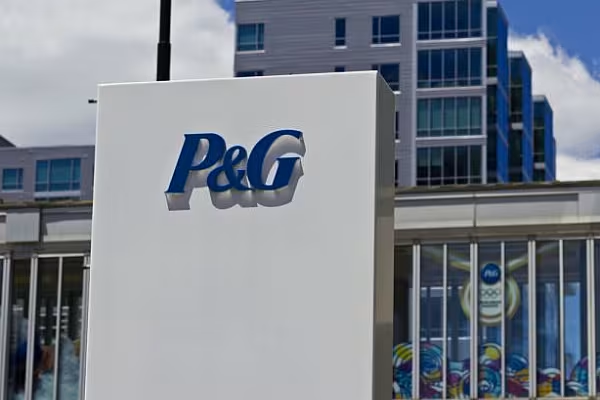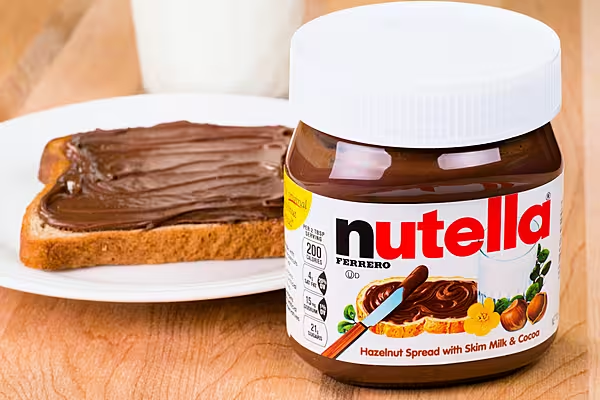A joint venture between Procter & Gamble and Italian healthcare group Angelini is working to create a sustainable recycling loop that would allow dirty diapers to be turned into plastic bottle caps and viscose clothing.
More than 20 million tonnes of disposable diapers are burned or dumped in landfills globally every year - a major environmental problem since their use became widespread in the 1960s and 1970s.
Part of the problem is that collecting, cleaning and breaking diapers into their component parts - plastic, cellulose and superabsorbent polymer - is tricky and expensive.
The other issue is that no-one has been able to establish a market for the recycled output, dooming previous commercial efforts to failure.
Waste Not, Want Not
Fater, a Pescara, Italy-based business that became a joint venture in 1992, believes it will be able to address these issues, backed by governments, consumers and other companies goaded into action by a new global awareness of the looming crisis of plastics pollution.
The new Italian government, in particular, has made finding "circular economy" solutions a pillar of its populist agenda.
"Nappies are made of the highest quality plastics and we've shown they can be recycled to extract high-value building blocks," says Marcello Somma, Fater's director of research and development and business development.
For P&G, the world's leading diaper maker and one of the biggest contributors to the problem with nearly 27% of the $44 billion diaper market, Fater ticks several boxes.
P&G aims to be able to recycle absorbent hygiene products (AHP), as diapers, incontinence pads, and feminine hygiene products are known, in 10 cities by 2030, according to its latest sustainability agenda. In the long term, it hopes to use 100% renewable or recycled materials for all products and packaging.
Roberto Marinucci, P&G's vice president of global baby wipes, sustainability, and the joint venture, said the company had still not established whether consumers would be willing to pay a premium for diapers they know are going to be recycled, but it was clear they want brands to care about the environment.
"We believe that the first reason, which is doing the right thing for the consumer, is sufficient enough to convince us to go ahead with the project," Marinucci said in an interview.
Fater's Diaper Recycling
Under EU regulations, Fater cannot sell the output of its diaper recycling operation, located near Venice, until it proves there is a market for it. To that end, it has been working on prospective clients and now has 11 letters of intent with businesses like bioplastic manufacturers and paper mills.
P&G is also part of an EU-backed group of 13 companies developing end products for the output. They include bioplastic manufacturer, Novamont, which can use the cellulose to make pharmaceutical ingredients.
Fater says the plastic from recycled diapers can be used to make school desks and urban playgrounds, cellulose can become viscose fabric or specialty paper, and super-absorbent polymer can be used in gardening and flood barriers.
P&G has no plans to use Fater's output in its diapers, which include Pampers and Luvs, until it completes consumer research on the idea, Marinucci said. In the interim, he said, the company may use the plastics for bottle caps.
The biggest delay to the project has been regulatory, Marinucci said, but he predicts it will get the EU green light in the next 12 months.
In the meantime, after several years in development, Fater's plant is operating at about a third of its 10,000-tonne annual capacity to provide samples and build stockpiles.
The plant expects to generate annual revenue equal to 50% of the cost of its machinery, Marinucci said.
"We're working on well-grounded assumptions, but they're still assumptions," he said. If it works, it could be expanded.
China Stops Waste Imports
Government efforts to resolve the problem of plastics pollution gained urgency last year when China announced it would stop importing foreign waste. China in 2016 took in 7.3 million tonnes of waste plastics - 56% of world imports.
Fater is not the first to attempt diaper recycling. UK-based Knowaste was forced to close its 70,000 tonne-per-year recycling plant in Holland in 2007 after a new incinerator beat it on cost and it was unable to find markets for the final product.
Efforts to open another facility have failed so far but Knowaste continues to invest in technology and is now considering a plant in the Middle East.
"We were way ahead of the curve and maybe went too soon. But the market is now showing clear signs of maturing," said company CEO Roy Brown.
Fater's patented process starts with local waste management utility Contarina SpA, which collects used diapers and other AHP from curbside bins or large users like hospitals from more than 50 local towns, trucking them into the 1,000-sq metre plant.
After dry cleaning the diapers using contact steam and disposing of the human waste in wastewater treatment plants, one tonne of AHP waste can yield 150 kg of cellulose, 75 kg of absorbing material and 75 kg of mixed plastic.
Starting at the end of 2020, a small-scale biorefinery in Amsterdam will be able to process the recovered secondary raw materials and convert them into biologically-based products like biodegradable plastics and biofertilizers.
Guy Schanschieff, founder of UK-based reusable diaper brand Bambino Mio, says he has seen others try and fail to recycle diapers over the years. For one thing, busy parents can't always deposit diapers in the required bins, he said.
"At the end of the day, it's a disposable product and it's going to be thrown away," said Schanschieff, who is also chairman of the Nappy Alliance trade group.
"Not creating the waste in the first place is always going to be the best thing."
News by Reuters, edited by ESM. Click subscribe to sign up to ESM: European Supermarket Magazine.














